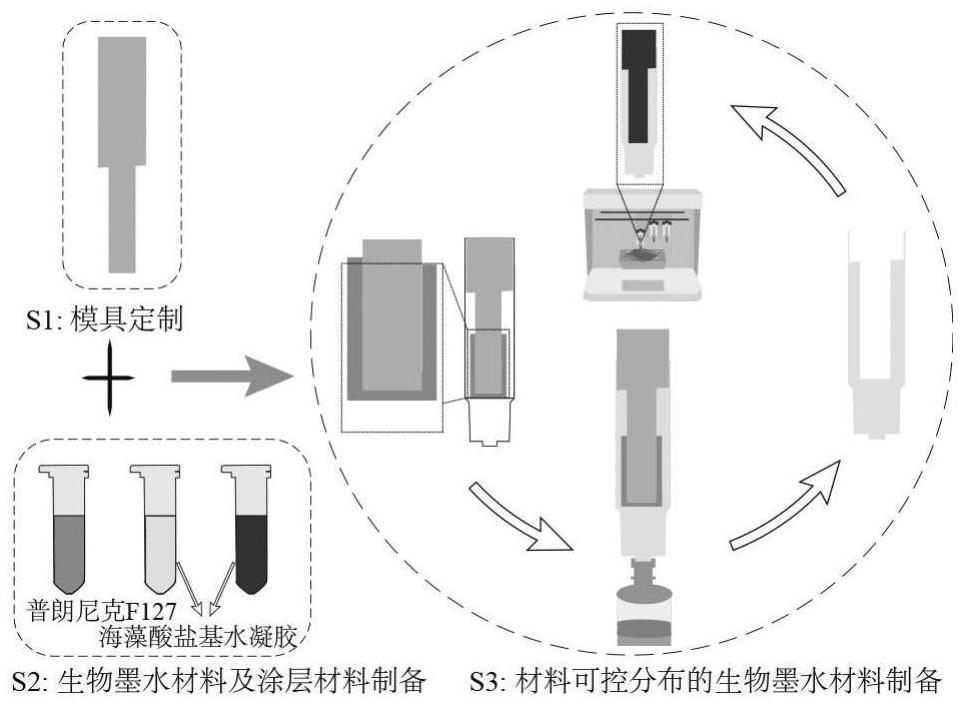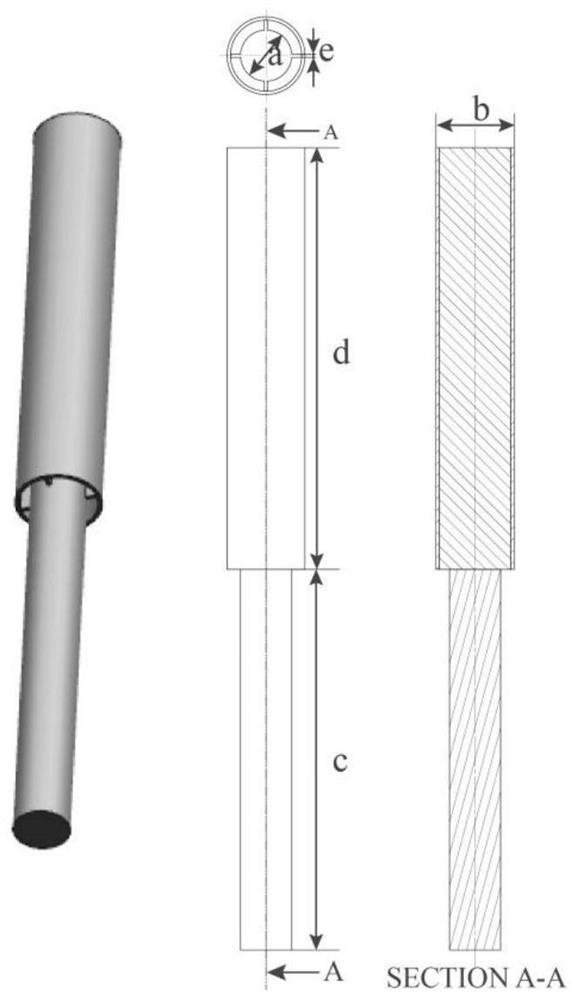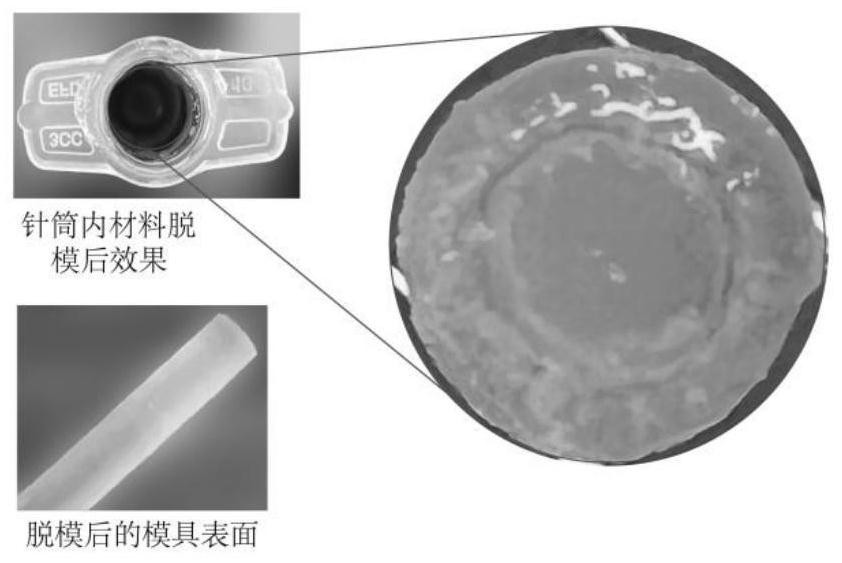Preparation method of 3D printing bio-ink material with controllable material distribution and preparation method of three-dimensional bionic hydrogel scaffold
A bio-ink and 3D printing technology, applied in the field of biological 3D printing, can solve the problems of difficult to regulate cell behavior and prepare functional tissues, and achieve the effect of personalized customization, controllability and simple production process
- Summary
- Abstract
- Description
- Claims
- Application Information
AI Technical Summary
Problems solved by technology
Method used
Image
Examples
specific Embodiment approach 1
[0028] Specific embodiment one: what this embodiment records is a kind of 3D printing bio-ink material preparation method with material controllable distribution, described method comprises the following steps:
[0029] Step 1: 3D print and customize a high-precision mold, where the mold fits with the inner surface of the syringe (not a tight fit, there are some random gaps);
[0030] Step 2: Prepare cold-induced hydrogel with temperature-sensitive properties and a dynamic viscosity of 3000-25000 Pa.s at room temperature and thermal-induced hydrogel with 1-500 Pa.s, and use the thermal-induced hydrogel as the mold surface coating Layer material; the surface coating of the mold means that not all surfaces are coated, but in fact only partial coating. To achieve the fit is to use the uncoated mold surface to produce a clearance fit with the inner surface of the syringe. This clearance fit acts as a fixed mold, not for demoulding between the outer layer of cold-induced hydrogel a...
specific Embodiment approach 2
[0032] Specific embodiment two: a kind of 3D printing bio-ink material preparation method with material controllable distribution described in specific embodiment one, in step 1, the shape of mold directly affects the material distribution of described 3D printing bio-ink material, 3D Printing uses a high-precision resin 3D printer with a printing accuracy of not less than 0.05mm.
specific Embodiment approach 3
[0033] Embodiment 3: A method for manufacturing a 3D printing bio-ink material with controllable distribution of materials described in Embodiment 1. In step 1, the mold pattern of the 3D printing is adjusted according to the preset pattern of bio-ink material distribution Personalized customization; the matching gap of the gap is +0.01 ~ +0.1mm, so as to ensure the fixation of the mold on the inner surface of the syringe and the insertion and removal of the mold during the production process of the bio-ink material.
[0034]Embodiment 4: A method for manufacturing a 3D printing bio-ink material with controllable distribution of materials described in Embodiment 1. In step 2, the thermogenic hydrogel is Pluronic F127, and the cold-induced hydrogel It is a composite hydrogel of gelatin and sodium alginate or methacrylamide gelatin and sodium alginate. Pluronic F127 is opposite to the temperature-sensitive properties of the cryotropic hydrogel. Adjusting the temperature can not ...
PUM
| Property | Measurement | Unit |
|---|---|---|
| Viscosity | aaaaa | aaaaa |
Abstract
Description
Claims
Application Information
 Login to View More
Login to View More - R&D
- Intellectual Property
- Life Sciences
- Materials
- Tech Scout
- Unparalleled Data Quality
- Higher Quality Content
- 60% Fewer Hallucinations
Browse by: Latest US Patents, China's latest patents, Technical Efficacy Thesaurus, Application Domain, Technology Topic, Popular Technical Reports.
© 2025 PatSnap. All rights reserved.Legal|Privacy policy|Modern Slavery Act Transparency Statement|Sitemap|About US| Contact US: help@patsnap.com



